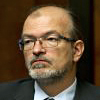Smart Energy Systems(keynote speaker)
Transition of energy systems to energy sources with lower environmental impact is becoming more attractive with fall of investment costs of renewables and volatile prices and political insecurity of fossil fuels. The resources are bountiful, especially wind and solar, while integrating them into current energy systems is proving to be a challenge. The limit of cheap and easy integration for wind is 20% of yearly electricity generation, while a combined wind and solar may reach 30%. Going any further asks for implementation of really free energy markets (involving day ahead, intraday and various reserve and ancillary services markets), and it involves integration between electricity, heat, water and transport systems. The cheapest and simplest way of increasing further the penetration of renewables is integrating power and heat systems through the use of district heating and cooling (which may be centrally controlled and may have significant heat storage capacity). In countries with low heat demand water supply system may be used to increase the penetration of renewables, by using water at higher potential energy as storage media, or in dry climates desalination and stored water may be used for those purposes, and reversible hydro may be used as balancing technology. Electrification of personal car transport allows not only for huge increase of energy efficiency, but also, electric cars due to low daily use may be excellent for demand side management and even storage potential. That will allow reaching 80% renewable in energy system, but the remaining 20% may be more an uphill battle without technology breakthrough. Long haul freight road transport, aviation and ship transport, as well as high temperature industrial processes, cannot currently be easily electrified. Biomass, if not used for producing electricity and heat, may cover half of those needs, but the rest will have to come from some other technology.

